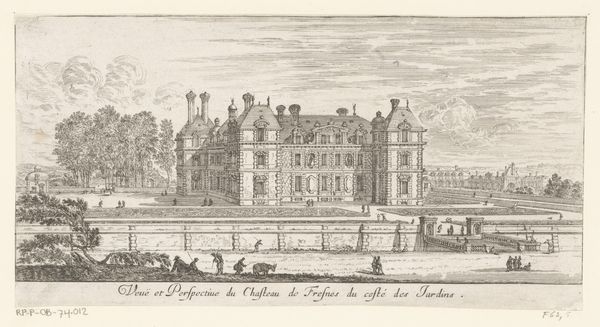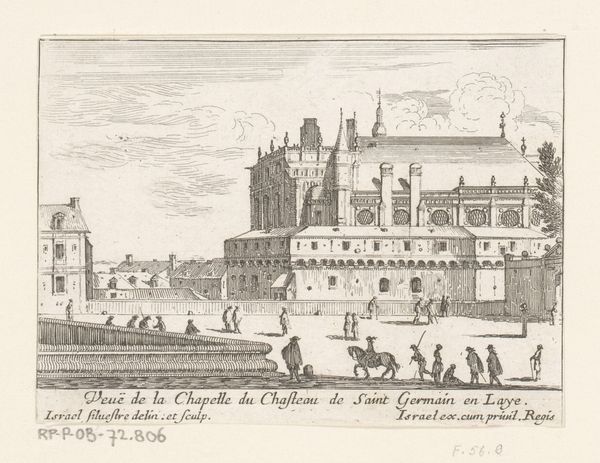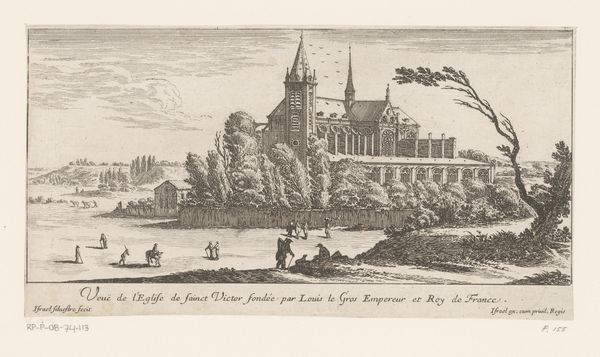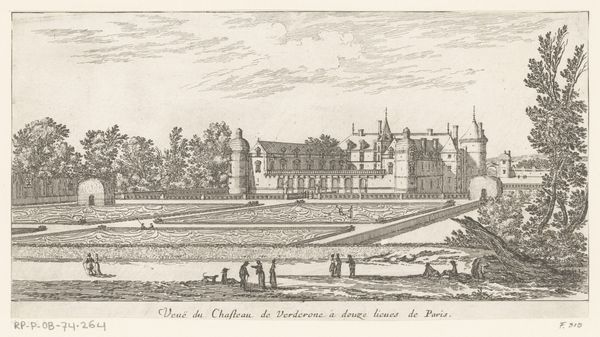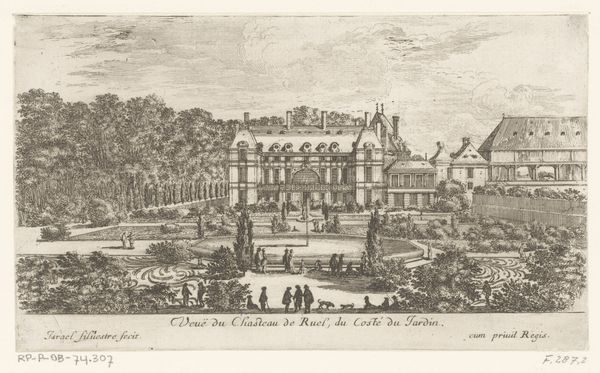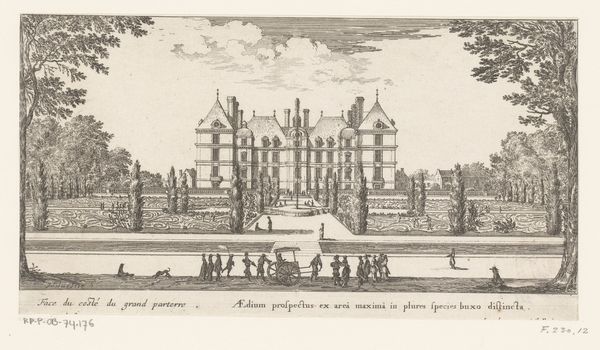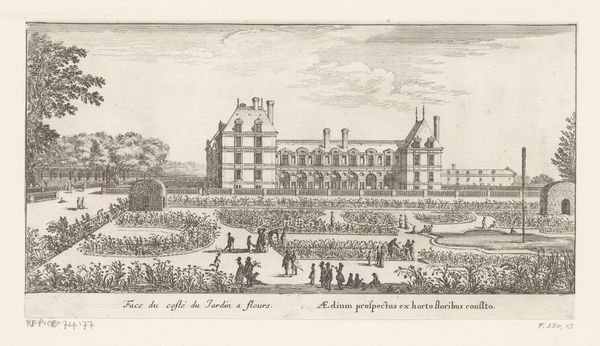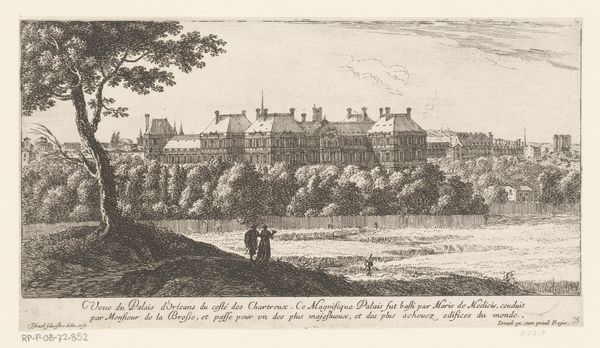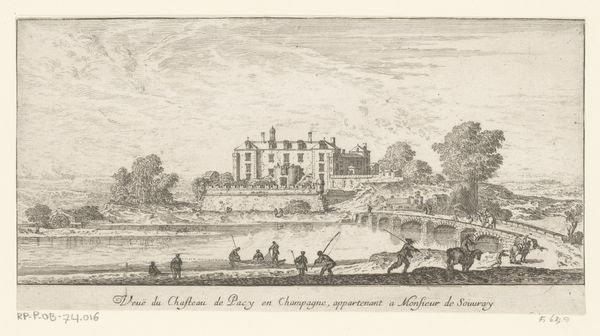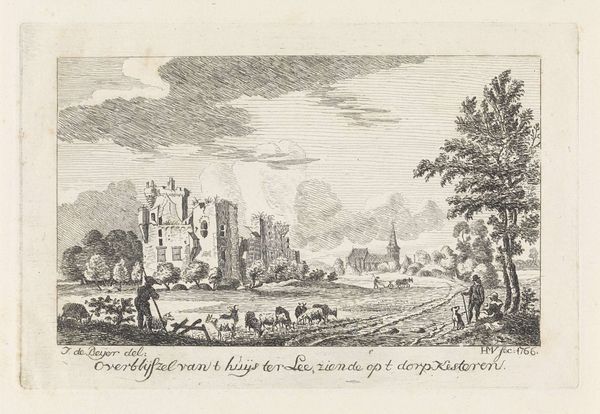
print, etching, plein-air, engraving
#
pen and ink
#
baroque
# print
#
etching
#
plein-air
#
landscape
#
line
#
cityscape
#
history-painting
#
engraving
#
realism
Dimensions: height 113 mm, width 197 mm
Copyright: Rijks Museum: Open Domain
Editor: So, here we have "Titelprent met gezicht op kasteel Fontainebleau" by Israel Silvestre, created in 1658. It's a print made using etching and engraving techniques. The scene feels so carefully composed. What stands out to you? Curator: Well, consider the *means* of its making. An etching demands specific materials – metal plates, acids, grounds. Silvestre, working in 1658, was embedded within a network of skilled artisans, from the metalworkers who provided the plates to the printers who made the final image. Look closely: the labor involved isn't just Silvestre's "artistic vision," it is the entire workshop’s. Editor: I hadn't thought of it that way, seeing all those hands involved. So, the subject, this grand chateau… how does that fit in? Curator: Fontainebleau wasn't just a pretty building. Its construction and maintenance depended on vast resources and labour – forestry for building material, quarries for stone. Think of the landscape itself, manicured to present this image of royal power. The print becomes a tool in disseminating that power, mass-produced for consumption. Editor: So the print itself is almost a commodity? Curator: Absolutely. These weren't necessarily seen as precious art objects. Consider the social function of such an image. Who was meant to see it? What ideas about the monarchy did it reinforce? And who *didn't* have access? The print, affordable and reproducible, extends the Chateau’s influence far beyond its grounds, and yet access is mediated by economic and social structures of consumption. Editor: That’s a totally different way of viewing art. I tend to get lost in the image itself, and don't consider the broader context that much. Curator: That's natural. But analyzing the materiality and social life of art enriches our understanding, and exposes the relationship of things we would assume that are inherently different: fine art, commodity and document of record. It exposes their shared history of labour and distribution.
Comments
No comments
Be the first to comment and join the conversation on the ultimate creative platform.


